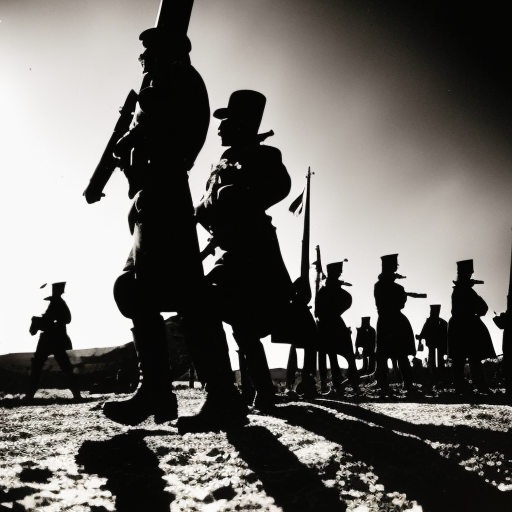Battle of Zacatecas: The Final Blow to the Mexican Revolution
The Battle of Zacatecas, fought on June 23, 1914, was a decisive confrontation during the Mexican Revolution. It marked the beginning of the end for the revolutionary leader Victoriano Huerta and his regime. The battle took place in Zacatecas, a strategic mining city in central Mexico, and pitted the forces of General Pancho Villa and his Division del Norte against the federal army commanded by General Luis Medina Barrón.
Background:
By 1914, the Mexican Revolution had been raging for four years, with various factions vying for power and control of the country. Victoriano Huerta, a former general, had seized power in a coup in 1913 and established a dictatorial regime. However, his rule was widely unpopular, and opposition to his government grew rapidly.
Preparations and Strategy:
General Villa, one of the most prominent revolutionary leaders, had been fighting against Huerta’s forces in northern Mexico. Recognizing the strategic importance of Zacatecas, Villa decided to launch an offensive to capture the city. He assembled a formidable force of around 20,000 men, including cavalry, infantry, and artillery. In contrast, General Barrón had only about 6,000 troops at his disposal.
Villa’s plan was to encircle Zacatecas and cut off the city’s supply lines, forcing the federal army to surrender. He divided his forces into three columns, with each column attacking from a different direction. This strategy aimed to overwhelm the defenders and prevent their escape.
The Battle:
On June 23, Villa’s forces launched their assault on Zacatecas. The battle began with intense artillery bombardment, followed by a series of coordinated infantry and cavalry charges. Despite fierce resistance from the federal troops, Villa’s superior numbers and firepower gradually wore them down.
The revolutionary forces managed to breach the city’s defenses and fought their way into the heart of Zacatecas. Street-to-street fighting ensued, with both sides suffering heavy casualties. The federal army, outnumbered and outgunned, eventually began to crumble under the relentless pressure.
The Aftermath:
By the end of the day, Villa’s forces had secured victory in the Battle of Zacatecas. The federal army suffered a devastating defeat, with thousands of soldiers killed, wounded, or captured. General Barrón himself was captured and later executed.
The fall of Zacatecas had significant consequences for the Mexican Revolution. It dealt a severe blow to Huerta’s regime, further weakening his grip on power. The battle also demonstrated Villa’s military prowess and bolstered his reputation as a formidable leader.
Impact on the Mexican Revolution:
The Battle of Zacatecas marked a turning point in the Mexican Revolution. It galvanized opposition to Huerta’s regime and led to a series of uprisings across the country. Within a year, Huerta was forced to resign, and the revolutionary forces, including Villa and his Division del Norte, played a crucial role in the subsequent political developments.
However, the victory at Zacatecas also intensified rivalries among the revolutionary factions. Villa’s growing influence and ambitions clashed with those of other leaders, such as Venustiano Carranza. These internal divisions ultimately led to a series of conflicts and power struggles, prolonging the revolution and preventing the establishment of a stable government.
In conclusion, the Battle of Zacatecas was a pivotal event in the Mexican Revolution. Villa’s victory dealt a significant blow to Huerta’s regime and demonstrated the strength of the revolutionary forces. However, it also exacerbated divisions within the revolutionary movement, prolonging the conflict and delaying the establishment of a stable government in Mexico.












